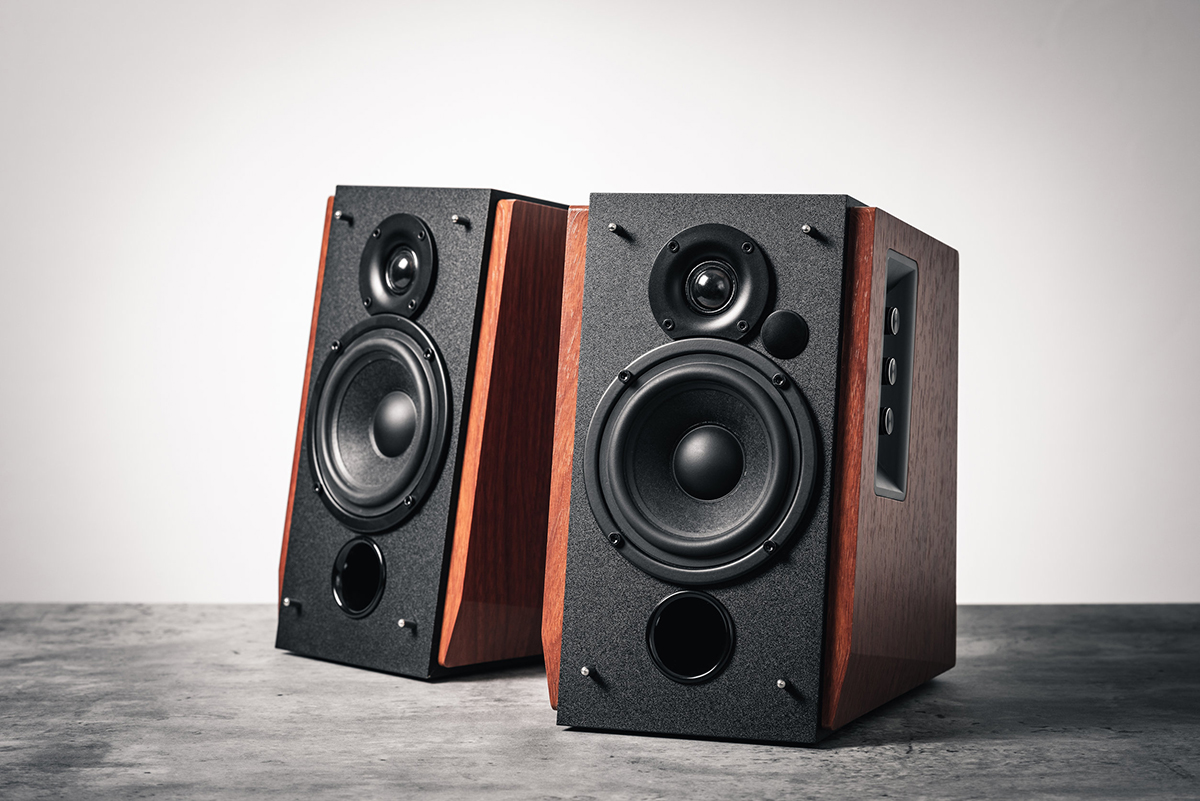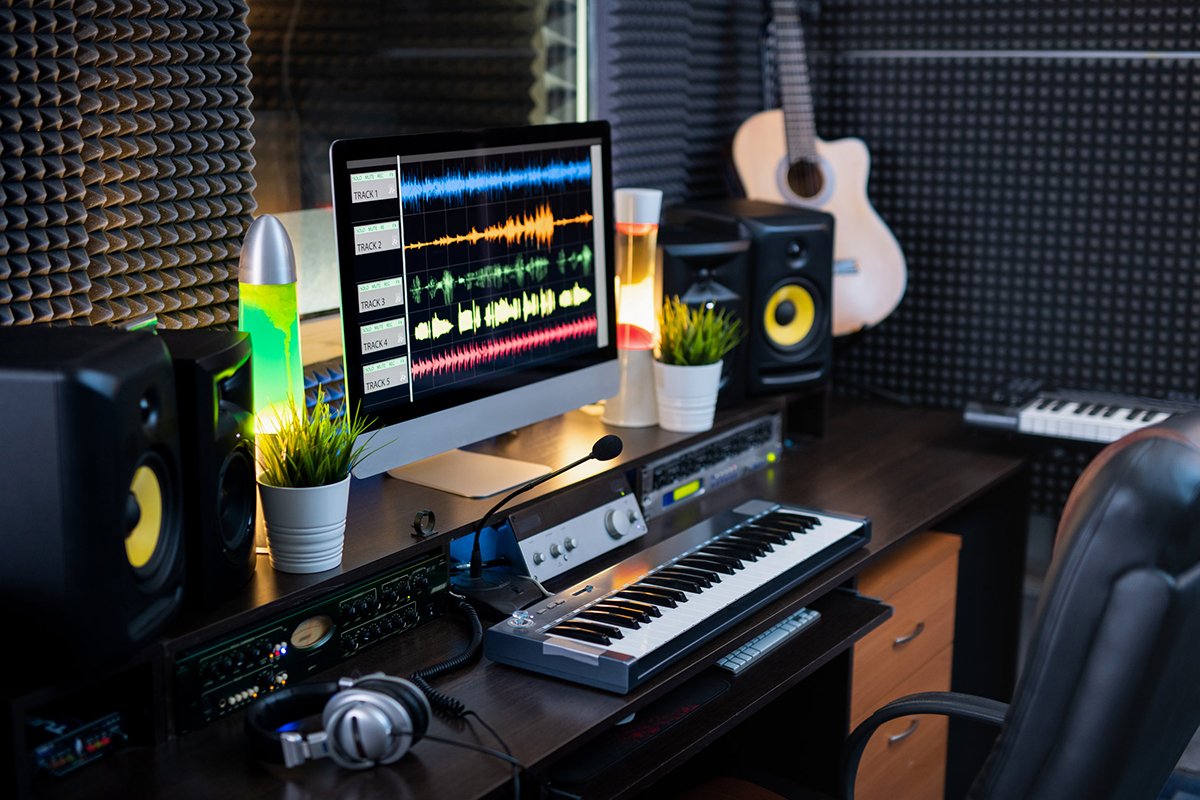If you’re an audiophile or just someone interested in knowing more about audio systems, you’ve probably come across amplifier or speaker distortion, either in theory or practice. Sometimes it can be hard to tell the difference between the two; however, for a quick and easy troubleshooting process, it can be crucial to know how to tell them apart.
Speaker-induced distortion is normally of a higher magnitude than amplifier distortion but softer in sound and with a lower order. Amplifier distortion can be quite harsh sounding and have a higher frequency.
I’ll dive into more details about the differences between amplifier and speaker distortion and what causes them below. I’ll also talk about how you can take care of your devices to minimize distortion.
Page Contents
Main Differences Between Amp and Speaker Distortion
You don’t have to be an avid enthusiast of audio systems or have particularly sensitive ears to notice distortion; chances are you’ll be able to detect distortion in the sound you’re hearing. In general, distortion is described to make the sound more fuzzy or gritty, basically “impure” in a way.
Sometimes distortion is actually used for artistic purposes in songs. In these cases, it adds a little something, a certain quality to the music that wouldn’t be there if the sound were flawless. However, in the context of this article, I’ll treat the concept of distortion as an undesirable output of your sound system.
You can find a brief summary of the main differences between amp distortion and speaker distortion in the following table:
| Area | Amp Distortion | Speaker Distortion |
| Magnitude | lower | higher |
| Frequency | higher | lower |
| Sound | harsh | soft |
| Cause |
|
|
Distortion
Before I go into more details about the differences between amp and speaker distortion, it’s important to have a good understanding of what distortion means in an audio recording.
Distortion happens when the output of an audio device is somewhat different from the input coming into it. This doesn’t necessarily mean that the sound is fundamentally changed (at least not in its absolute meaning), but it means that there are imperfections in the output that make it different compared to the input.
If the signal chain components are completely electronic, there’s less chance of distortion than in the case of electro-acoustic components. That’s not to say that electronics can give you flawless performance; like anything else, if they’re pushed too far, they can produce sounds of incredibly low quality. When electronic components are pushed beyond what they can handle to amplify a sound, they can end up distorting it beyond recognition.
Total Harmonic Distortion (THD)
Total harmonic distortion is sometimes used interchangeably with distortion, which is not exactly correct, as the umbrella term “distortion” includes a wide variety of sound deformations, THD included. However, for audiophiles, THD is the most common way of expressing distortion in a quantifiable manner.
Total harmonic distortion adds all the distortion products into one value, expressed either in percentage or decibels (dB). The percentage value will always be less than 100%, while the decibel value will always be negative.
To put it simply, you’ll encounter distortion when the signal is too loud for your devices, which forces them to go into overdrive and produce the deformed sound. This issue can happen to the amplifier as well as the speaker.
Amplifiers and Speakers
An amplifier, as the name itself implies, amplifies sounds. It takes an audio signal at its input and produces it at a bigger amplitude. The amplifier turns the direct current from the power supply into an alternating current for the speakers.

As you can imagine, the quality of amplifiers varies a lot, so you probably know more or less what to expect in terms of sound quality and distortion based on what kind of amplifier you get.
High-end amplifiers handle larger loads and peaks in the audio. However, even the most expensive and sophisticated options can’t avoid distortion because the sound depends on the rest of the components as well.
One of these components is speakers. Speakers are the output devices of your sound system, converting electromagnetic waves into sound waves that you can hear. The quality of the audio produced depends a lot on the speakers.
Just like amplifiers, there are many types of speakers with varying levels of quality, but even with the highest quality alternatives, there’s always a chance of distortion. If the signal sent to the speaker is higher than expected, the waveforms of the audio signal will change in strength and shape, causing you to hear what we have established now as distortion.
All of these differences can help you tell whether the amplifier or the speaker is causing the problem in your sound system and enable you to fix the problem. I’ll go into more detail regarding each type of distortion in the following sections to make the difference between them as clear as possible.
Amplifier Distortion
Amplifier distortion occurs when the waveform of the signal received at the input doesn’t track the waveform of the one at the output. That’s because the amplifier is attempting to deliver an output current or voltage that’s not within its capabilities. In other words, the amplifier is overworked.

There are certain “qualities” to the sound that can be distorted by an amplifier, and they may help you realize that the problem lies within the equipment itself rather than somewhere else in your audio system. However, the descriptions of these qualities are not exact because they depend on the senses of different people who have had these experiences, and there’s a chance they may be too subtle to tell.
Nevertheless, it’s good to know everything you can to try and discern the type of distortion your audio system is going through. Most people who have extensive experience in audio systems say that the sound distorted by an amplifier sounds “harsh.” This means that it’s grittier to the point of being grating and very unpleasant to your ears.
Additionally, according to experiences of audiophiles, amplifier distortion is skewed to higher frequencies and will produce sounds that will have you noticing immediately and trying to control the volume. However, you have to be careful because amp distortion can cause irreparable damage to your speakers, even at a level that you might not notice by just listening.
Several different problems in your audio system can cause amplifier distortion. The main causes are an overdrive in the input stage, issues in the internal circuit of the amplifier, wrong impedance wiring of the speakers, shorted cables, and more. Unfortunately, it’s not easy to identify the exact cause, but it can be very helpful to have a starting point.
Speaker Distortion
Speakers have drivers with vibrating parts that create the sounds that you hear. They also feature a voice coil that causes an electromagnetic process enabling the surface area of the driver to move. This driver imitates the waveform of the signal it receives in order to produce accurate sounds.

However, when the signal is higher than expected, the voice coil is pushed to points beyond its capabilities, making the driver unable to produce an accurate sound. The signal waveform and the sound waveform are not the same, which means there’s distortion coming from the speakers.
The general consensus is that speaker distortion, while similar, is softer in sound compared to amplifier distortion. This means that it won’t be as grating and unpleasant to make you turn the volume down immediately. You might hear “woofing” or “chuffing” sounds, though, depending on the type of speakers you have.
Frequency-wise, some audiophiles suggest that speaker distortion skews to lower frequencies and is much higher than amplifier distortion. It’s important to keep an ear out for telltale signs of speaker distortion like soft clipping before it hits its mechanical limits.
There are several reasons why speaker distortion might occur. The low quality of the speakers is one of them, in addition to higher audio volumes than the speaker can handle and receiving insufficient power from the amplifier. These problems don’t just affect sound quality and may even damage your components. Knowing the signs and the possible causes can help identify and fix the problems before any irreversible damage is done.
Avoiding Distortion
Sometimes you might not even notice significant amounts of distortion before it’s too late and components of your audio system have been damaged. That’s why it’s best to avoid this phenomenon altogether.
The best way to avoid distortion is to simply pay attention when buying devices for your system. If you’re buying every component at the same time, make sure they:
- Are of good enough quality; and
- Have the same impedance.
If you’re buying parts for an existing system, make sure to note the impedance of your existing devices so you can match them with the new components you’re buying.
It’s crucial to remember that there will always be distortion in your system, no matter how small. There’s no perfect, flawless device that can avoid distortion entirely, but it is possible to make sure that your devices keep it to low, harmless levels.
How To Take Care of Your Speakers
Distortion isn’t the only phenomenon that can damage your speakers or amplifiers. For this reason, if you want to optimize your equipment’s performance and longevity, you’ll have to take a few steps to ensure the best possible environment and circumstances for them to operate.
- Make sure to store your speakers in a dry, cool-temperature area that doesn’t come in close contact with external elements. For example, placing your speakers outside under the scorching sun during a humid summer day can be a recipe for disaster, especially if you do so for extended periods.
- Always keep your equipment as clean as possible, as dust is one of the most common factors that deteriorate a speaker’s quality and longevity. Dust particles can easily get inside the wire connectors, distorting the electric signals running through them.
- Place your equipment in a well-ventilated area. Doing so won’t only prevent the dust layers from forming too quickly, but it will also cool down your space and provide better conditions for the equipment to operate in.
- Avoid any possible power surges by always keeping the volume under the manufacturer-advised maximum level. Playing your speakers too loud can be more detrimental to their quality than you might think, as doing so can damage your equipment both mechanically and electrically.
How To Take Care of Your Amplifiers
Having high-end audio gear isn’t enough; taking proper care of your amplifiers is equally important for your sound system’s quality and longevity. By following just a few simple tips, you can significantly increase the performance of your amplifiers.

All the storage and maintenance tips mentioned for speakers also apply to amplifiers. Like most other electrical equipment, they require a covered, dry, cool, well-ventilated area to maintain their sound quality.
However, if you must take your amplifier out for a party or event, at least let the equipment warm up at room temperature first before taking it out and operating it. Doing so can prevent it from going through any extreme temperature shocks that could affect its wiring system.
Additionally, you’ll want to make sure never to move an amp while it’s turned on, as its filaments have become hotter, leaving them more susceptible to damage and wear.
Final Thoughts
If you’re familiar with audio systems, you’ve probably encountered sound distortion, which can be very unpleasant to hear and, more importantly, can damage the components of your systems if it goes unnoticed. Both amplifiers and speakers can distort sound for different reasons, so it is essential to understand the difference between the distorted sounds caused by each.
Amplifier distortion is much harsher in nature, gritty, impure, and probably easier to detect. It is skewed to higher frequencies, unlike speaker distortion. Speaker distortion is softer in sound, with light clipping and chuffing.

